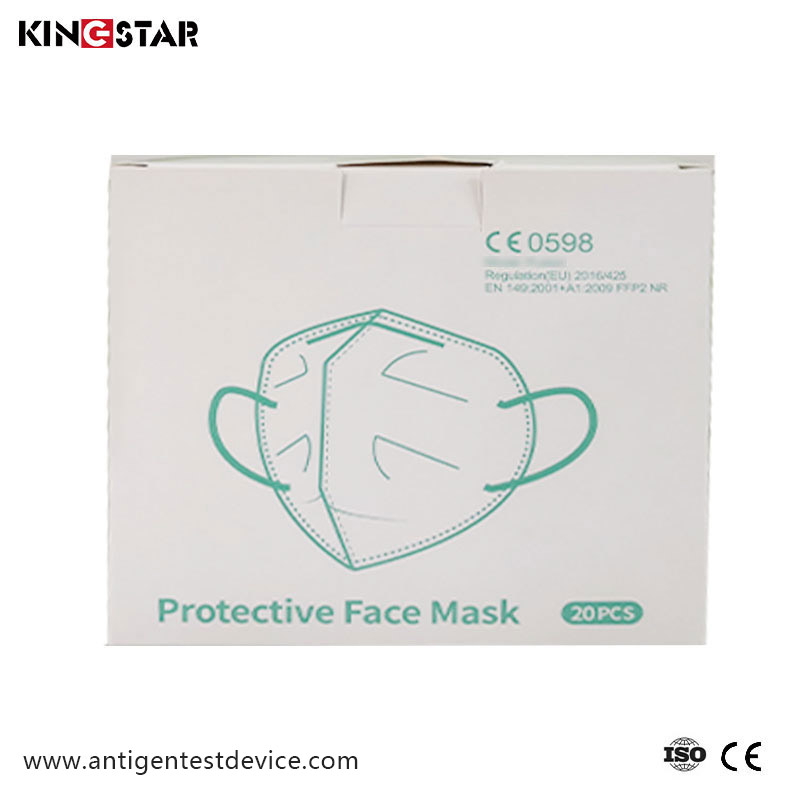What Makes a Disposable Protective FFP2 Face Mask Different from Surgical Masks?
2024-10-10

What are the differences between FFP2 and surgical masks?
Surgical masks are designed to protect against large droplets, splashes, or sprays of bodily fluids, whereas FFP2 masks are more effective against smaller airborne particles. Surgical masks are not considered respiratory protection and do not provide the same level of protection as FFP2 masks. Additionally, surgical masks are typically disposable and should not be reused, whereas FFP2 masks are designed for multiple uses.
What are the benefits of FFP2 masks?
FFP2 masks offer excellent protection against airborne particles, including viruses, dust, and allergens. The masks are designed to fit snugly on the face, which helps to prevent the inhalation of airborne particles. FFP2 masks are also comfortable to wear and do not restrict breathing.
What are the standards for FFP2 masks?
The standards for FFP2 masks are set by the European Union. The masks must meet certain requirements, including a minimum filtration efficiency of 94%, a maximum breathing resistance of 240 Pa, and a leakage rate of no more than 8%. FFP2 masks must also be marked with the CE mark and the number of the notified body responsible for the quality control of the product.
Can FFP2 masks be reused?
Yes, FFP2 masks can be reused, but they must be properly cleaned and disinfected. The masks should be stored in a clean, dry place between uses and should not be shared between individuals. It is important to follow the manufacturer's instructions for cleaning and storage.
What is the lifespan of an FFP2 mask?
The lifespan of an FFP2 mask depends on the frequency of use and the environment in which it is used. The mask should be replaced when it becomes difficult to breathe through or when it is visibly soiled. It is recommended that FFP2 masks be replaced after four hours of continuous use.
In conclusion, FFP2 masks are an important tool in protecting against airborne particles. They offer excellent protection, are comfortable to wear, and can be reused. When using an FFP2 mask, it is important to follow the manufacturer's instructions for cleaning and storage, as well as the recommended wear time.
KINGSTAR INC is a leading manufacturer of FFP2 masks. Our masks are made with high-quality materials and meet the strictest standards for respiratory protection. Contact us at info@nbkingstar.com to learn more about our products and services.
References:
1. Verbeek, J. H., et al. (2020). "Personal protective equipment for preventing highly infectious diseases due to exposure to contaminated body fluids in healthcare staff." Cochrane Database of Systematic Reviews.
2. World Health Organization. (2020). Advice on the use of masks in the context of COVID-19: interim guidance, 5 June 2020.
3. Centers for Disease Control and Prevention. (2020). Strategies for optimizing the supply of N95 respirators.
4. European Standard EN149:2001+A1:2009. Respiratory protective devices - Filtering half masks to protect against particles - Requirements, testing, marking.
5. Occupational Safety and Health Administration. (2020). Respiratory protection standard, 29 CFR 1910.134.
6. Rengasamy, S., et al. (2017). "Filtering facepiece respirators with an exhalation valve: Measurements of filter penetration exhale airflow, and CO2 buildup inside the respirator." Journal of Occupational and Environmental Hygiene.
7. Smith, J. D., et al. (2016). "Effectiveness of N95 respirators versus surgical masks in protecting healthcare workers from acute respiratory infection: a systematic review and meta-analysis." CMAJ.
8. United States Environmental Protection Agency. (2020). "What you need to know about respirators."
9. Cheng, V. C., et al. (2020). "Personal protective equipment for infection control." The Lancet.
10. National Institute for Occupational Safety and Health. (2020). "Understanding respiratory protection against SARS-CoV-2."



